
Email Click-Through Rate: How To Increase CTR [2025]
If you’re serious about email marketing, the number one metric you should be tracking is the email click-through rate.
This important metric allows you to evaluate the success of your email marketing campaigns and identify whether your email copy, design, subject lines and other elements achieve the purpose of capturing users.
This blog post will cover everything about:
- the definition and formula for measuring email CTR
- what a good email click-through rate is
- how to improve your click-through rate with effective strategies
What Is Email Click-Through Rate?
Email click-through rate is the percentage of recipients who clicked on at least one link (hyperlink, CTA, or image) in your email.
When marketers and businesses send an email, they want recipients to take a specific action upon opening it. This action can be anything from buying a product and completing a survey to donating for a cause.
For this to happen, emails contain some sort of call-to-action. Every time a user clicks on such a link and gets directed to a website, landing page, abandoned cart, etc. to complete the action, this contributes to the CTR.
Before we delve into the formula to calculate your CTR, it’s important to understand that there are 2 types of click-through rates, the total click-through rate (TCTR) and the unique click-through rate (UCTR).
TCTR
The total click-through rate refers to the total number of clicks an email’s links get. It counts every single click from whichever device, even if it’s from the same person. This means that if, for example, you click a link on an email from your laptop, and then click the same link from your phone, the number of clicks registered for TCTR is 2.
In essence, this metric shows the popularity of your message (i.e., how many clicks it generates).
UCTR
The unique click-through rate refers to the number of unique clicks an email’s links get. This metric registers only one click, even if a person opens the same link 5 times (e.g., to show something to their friends or revisit the website).
So, UCTR may be more useful if you want to identify how effective your campaigns are in converting your audience.
In any case, some of the best email marketing services, like Moosend, provide both metrics in order for users to have a better and more complete understanding of their campaigns’ performance.
Email Click-Through Rate Formula
Now that we’ve clarified what the click-through rate is, let’s see how we can actually calculate it.
How To Calculate Email CTR
You can find the formula to calculate the click-through rate of your emails below:
CTR = The number of people who clicked on a link divided by the total number of emails delivered successfully, and then multiplied by 100.
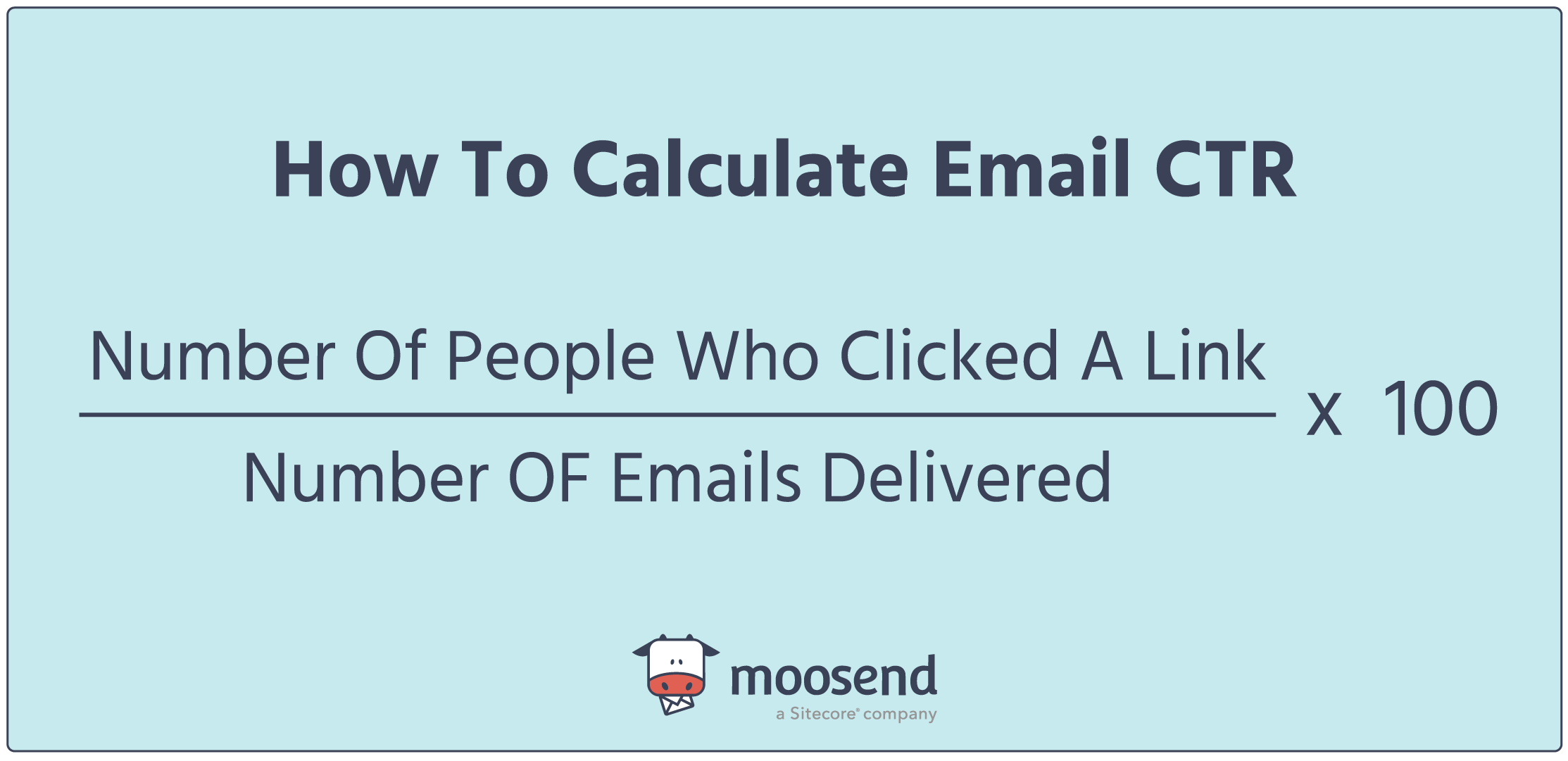
For example, let’s say you send an email campaign to a list of 200 people, and 180 emails are successfully delivered to their recipients. 45 of those 180 recipients clicked on a CTA and were directed to a new page.
So, to calculate your CTR, you have:
CTR = 45 People That Clicked A Link / 180 Emails Delivered x 100 = 25%
Ready to turn numbers into more clicks?
Improve your CTR with zero friction and start seeing real results.
Try MoosendWhat Is A Good Email Click-Through Rate?
This is a question that many marketers and business owners seem to be asking.
According to research from Moosend, the average email click-through rate across industries is 4.01%.
Other data coming from Mailchimp suggest that the average CTR across industries is 2.91%. Finally, CampaignMonitor states a 2,3% average CTR for 2023, which is 0,3% lower compared to the previous year.
However, email click-through rate also depends on the industry your business is in. Other factors affecting the answer are your budget, goals and audience size.
For this reason, we give you the industry average click-through rates so you can better understand whether your campaigns are performing as well as they could.
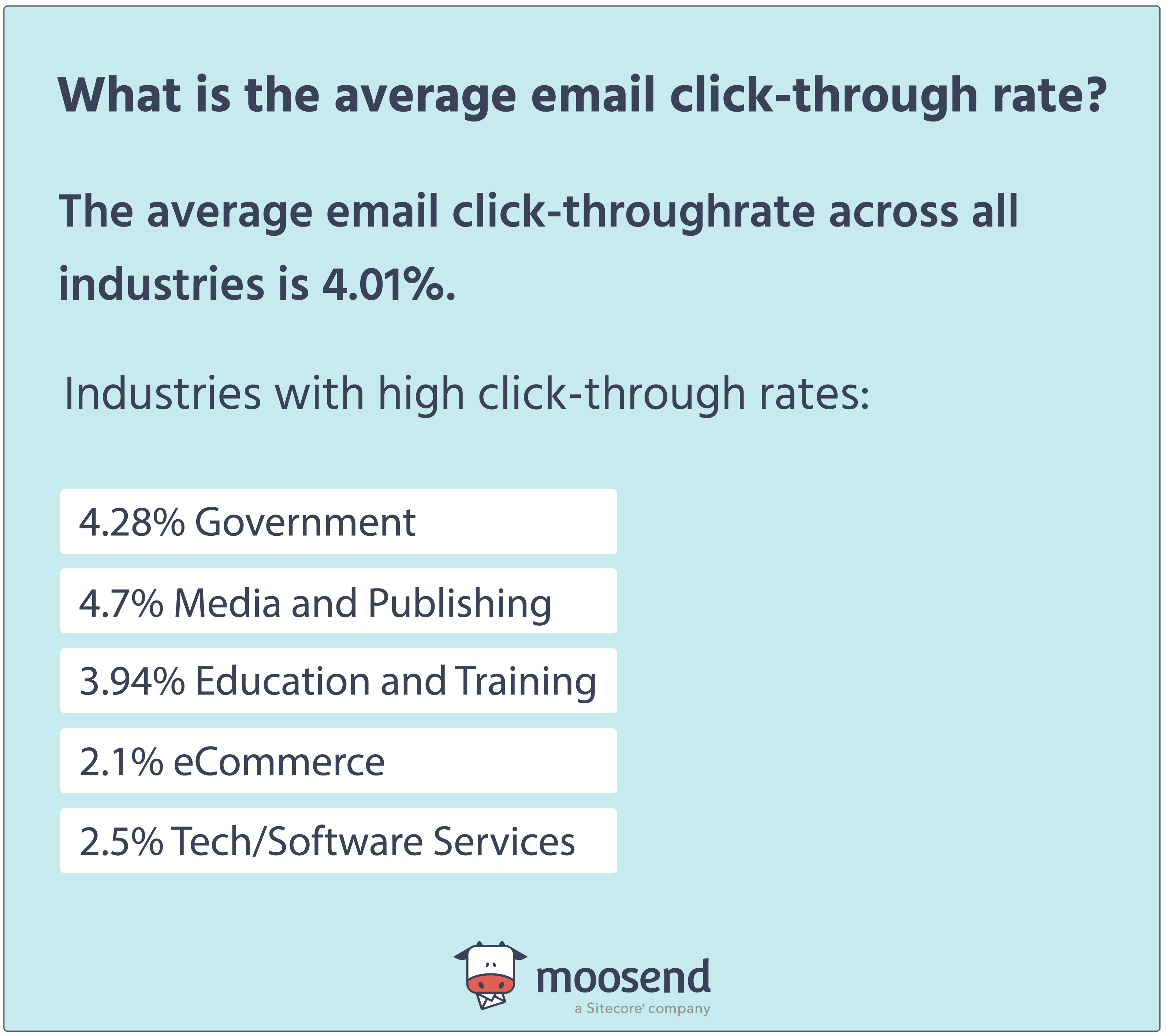
If you’re interested in more, here’s the complete list of email marketing benchmarks!
Click-Through Rate Vs Click-To-Open Rate (CTR vs CTOR)
In email marketing, various metrics provide unique insights for marketers. Along with the click-through rate (CTR), equally important is the open rate.
The open rate shows us the percentage of email recipients who opened the email sent to them. This is practically a representation of how effective your email subject lines are in attracting more clicks.
If we combine the open rate with the click-through rate, we get a very insightful metric called click-to-open rate (CTOR). Unlike CTR, click-to-open rate (CTOR) looks at clicks as a percentage of opens.
This metric only evaluates the responses of recipients who read/open your email. As a result, CTOR removes from the equation the impact of list composition, situational context, and subject line content.
Essentially, CTOR only measures the performance of the content of the email.
This is undoubtedly something that might be valuable for marketers looking to improve the email content of their digital marketing campaigns.
How To Improve Your Click-Through Rate
If you are more of a visual learner, feel free to check our video guide on Email Click Through Rates and Open rates:
Calculating your CTR and comparing it to industry standards is the first step in the journey to improve your click-through rate.
After you do that, there are proven tips and steps you can follow to boost the effectiveness of your campaigns and, in turn, your click-through rate:
1. Optimize Campaigns For Mobile Devices
In this day and age, more and more people are viewing their emails on mobile devices. It surely doesn’t come as a surprise that more than 62% of emails are opened on mobile, according to recent surveys.
For this reason, optimizing your campaigns for mobile is an essential factor affecting your click-through rate and the effectiveness of your emails.
Make sure your email copy is easy to read and that the CTA button(s) are easy to click. What’s more, it’s advisable to use mobile-responsive email templates. This ensures that your campaigns adjust automatically in terms of text, images, and buttons to accommodate the different screen sizes.
Email newsletter software such as Moosend provide a wealth of responsive templates that you can customize to match your brand. These templates eliminate the stress of paying attention to the tiniest details, while they look good on all devices.
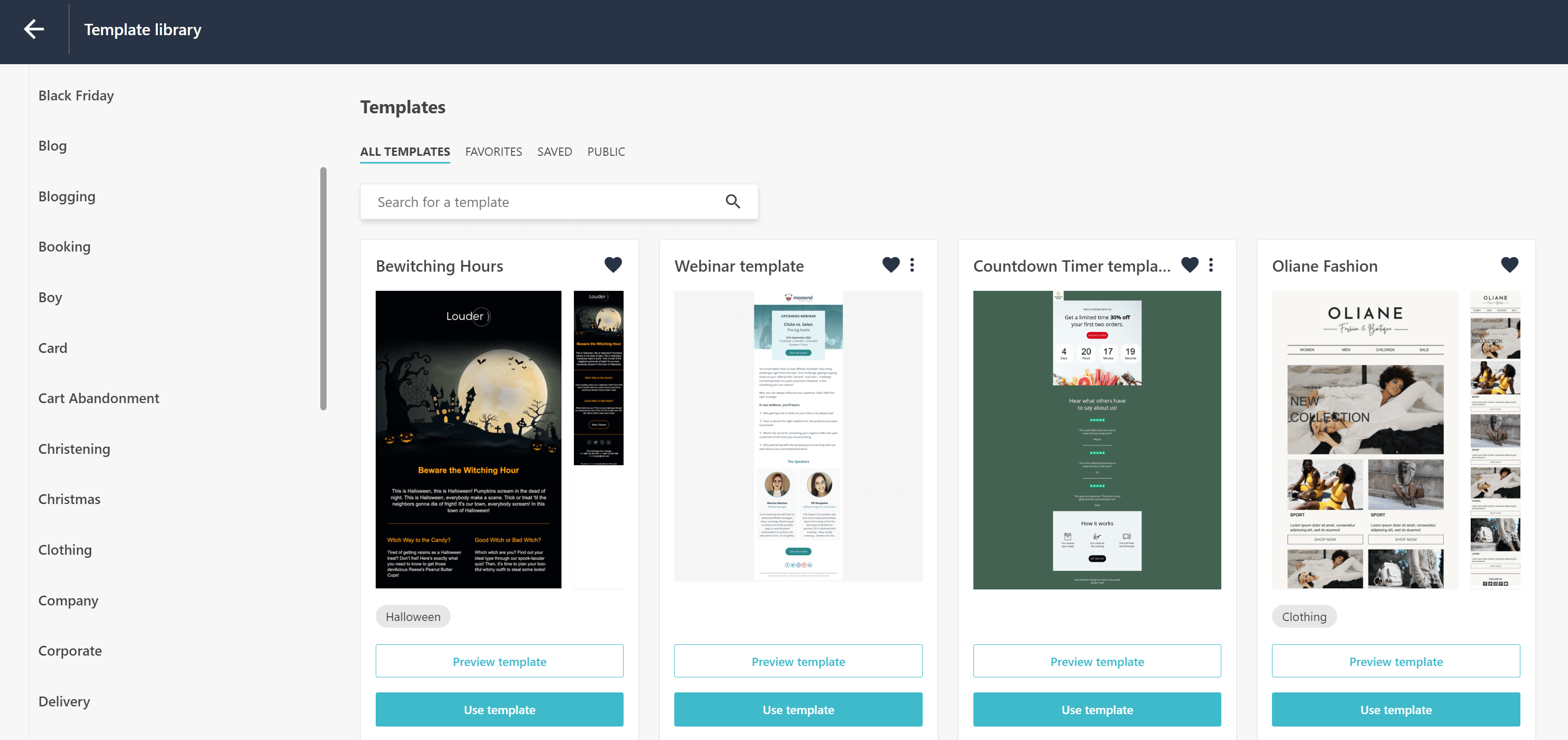
Finally, it’s always a good idea to preview your email campaign before you send it to see how it renders on both desktop and mobile devices.
2. Have A Clean Email Design
A ready-made email template that has clear layouts can be a go-to solution, especially when it can be customized based on your brand needs.
But even if you decide to create something from scratch, make sure you follow a certain logic and “guide” your reader toward the next step. Users need to know what action they are supposed to take, without getting distracted from other design elements such as images, videos, etc.
A good strategy you can follow for an effective email design is the Inverted Pyramid method. In this method, your campaign is built around your call to action. You provide a clear headline with short text (visuals can be used too), but you want your reader to reach the CTA as quickly as possible.

In this way, you avoid jeopardizing their attention span and missing the click on your CTA.
3. Stick To One Or Two CTAs
Giving subscribers too many options may have the opposite effect and cause an “inability” to make a decision (action paralysis as it is known).
So, it’s best to include only one or two CTAs maximum (with the second CTA being at the end). Regarding the CTA placement, you can A/B test to find what works best for your audience.
Usually, the CTA is placed above the fold in order to ensure maximum visibility. It’s advisable to put HTML buttons instead of text links or images since they load faster and can be customized to your needs.
Last but not least, pay attention to the language you use in your CTA. Active language works best since it encourages users to take action. You can also add a sense of FOMO in your copy to promote urgency.
As for the color of your CTA button, it needs to stand out from the rest of the email.
4. Personalize Your Emails
Personalization in email marketing is an absolute must and not optional if you want to succeed in converting your audience. People’s inboxes are bombarded daily with marketing campaigns and brands must make every effort to establish a personal connection with their subscribers.
One of the best ways to do that is by applying personalization to your emails. Don’t forget to include the recipient’s name in the email (or subject line) and make sure you deliver content relevant to their interests.
Tip: You can ask your subscribers what they wish to receive from your email communications through your signup forms. This also helps you segment your email list, thus delivering more engaging content.
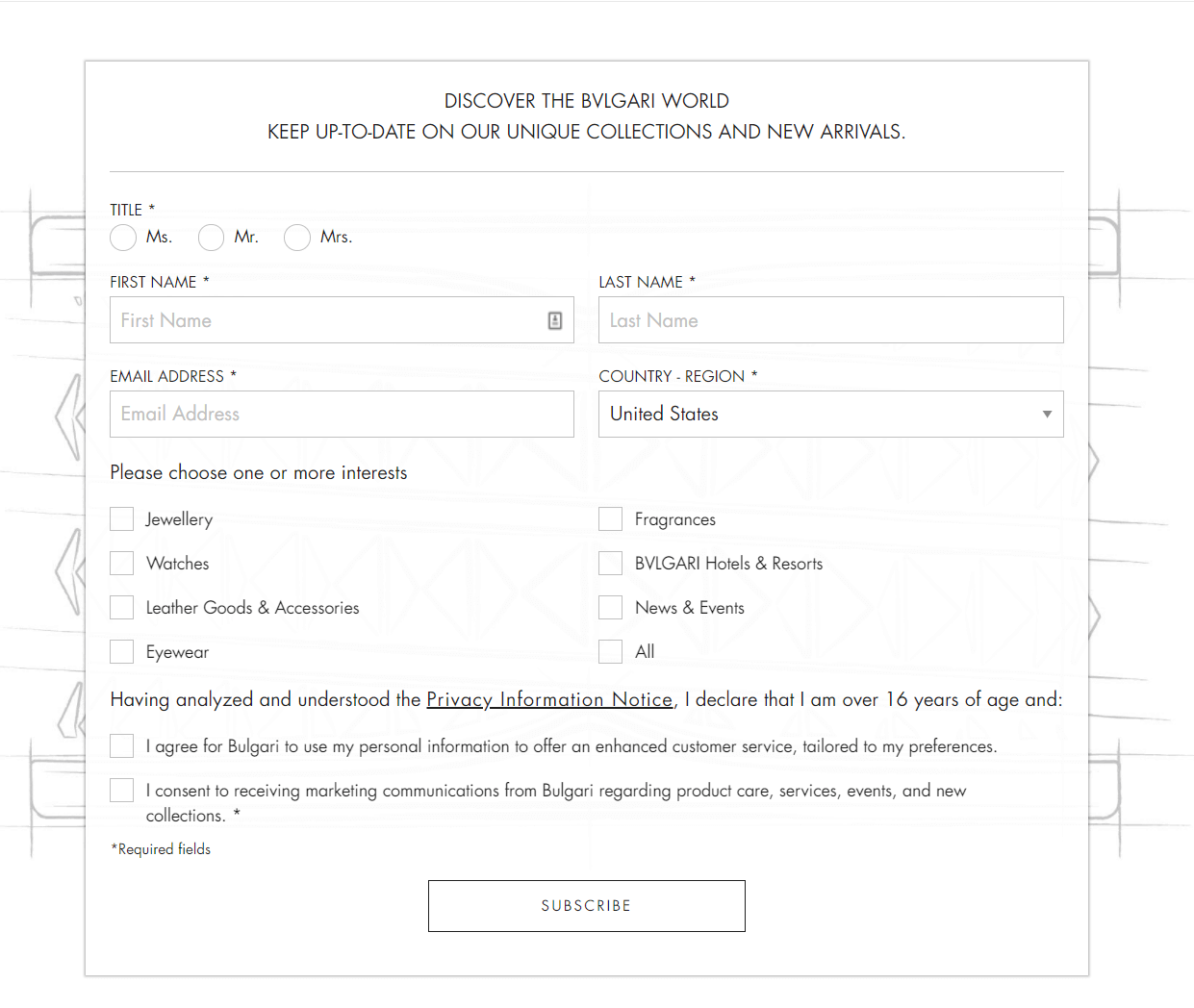
If you’re running an eCommerce business, you need to track users’ behavior. In this way, you can use customer data in regular or automated email marketing campaigns and achieve higher click-through rates.
5. Include Social Media Links
Invite your subscribers to social media platforms like LinkedIn, Facebook, or Instagram to nurture them further and establish a closer relationship with them.
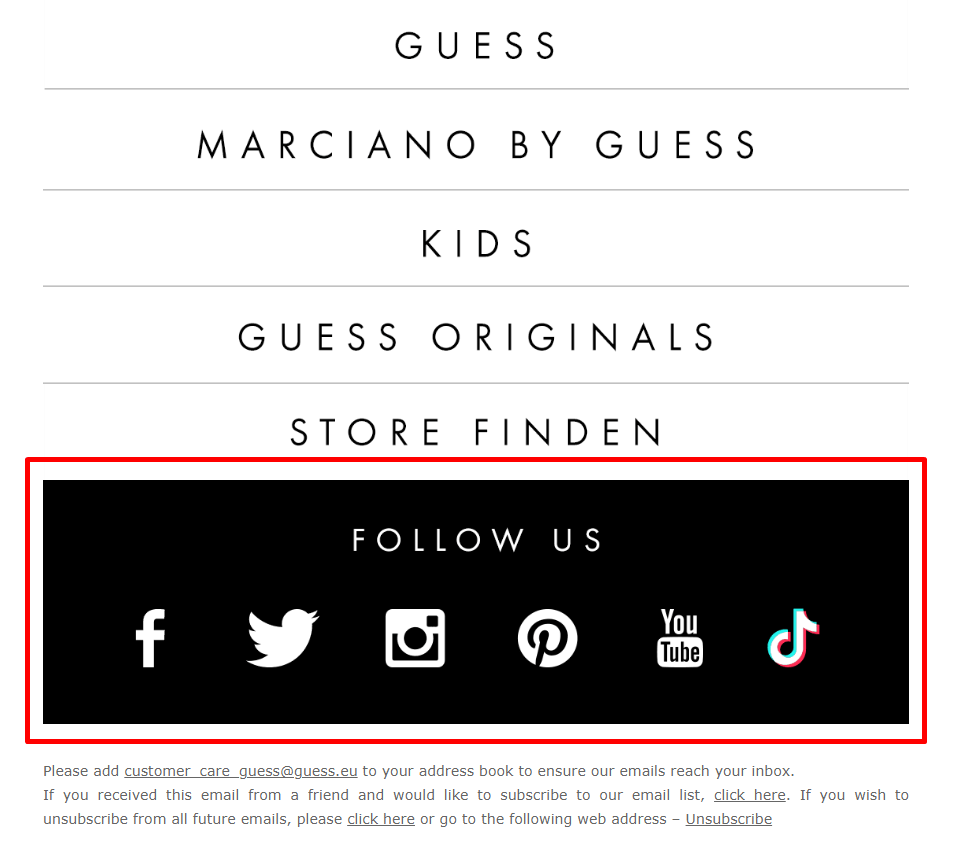
Social media links and buttons not only look good if placed correctly, but they also help you in getting closer to an omnichannel marketing strategy. And if you’re consistent with your marketing messages, you’ll see your conversion rates go up soon enough.
6. Conduct A/B Testing
One of the most effective ways to increase your email click-through rate is A/B testing your campaigns. With email A/B testing, you send variations of the same email to different groups of people to identify which version yields the most clicks (higher CTR).
In A/B testing, it’s important that you make only one change at a time! Otherwise, you won’t know what affected the change in the email open rate or click-through rate.
What’s more, the more you A/B test your campaigns, the more you’ll see patterns for your audience that will allow you to optimize your overall email marketing strategy along the line.
Email marketing solutions like Moosend let you A/B test everything from email subject lines to email copy and visuals. All of this happens easily through the modern interface, while the rich analytics dashboard provides insightful information to improve your campaigns.
7. Use Images And GIFS
Smart marketers know that infusing your email content with creative elements that complement your story makes your email more interactive. What’s more, a visual can replace a long wall of text that would only tire readers.
Here is an example from EM Cosmetics. Promoting a sense of mystery and FOMO, they leverage a high-quality GIF to tease their new product line.
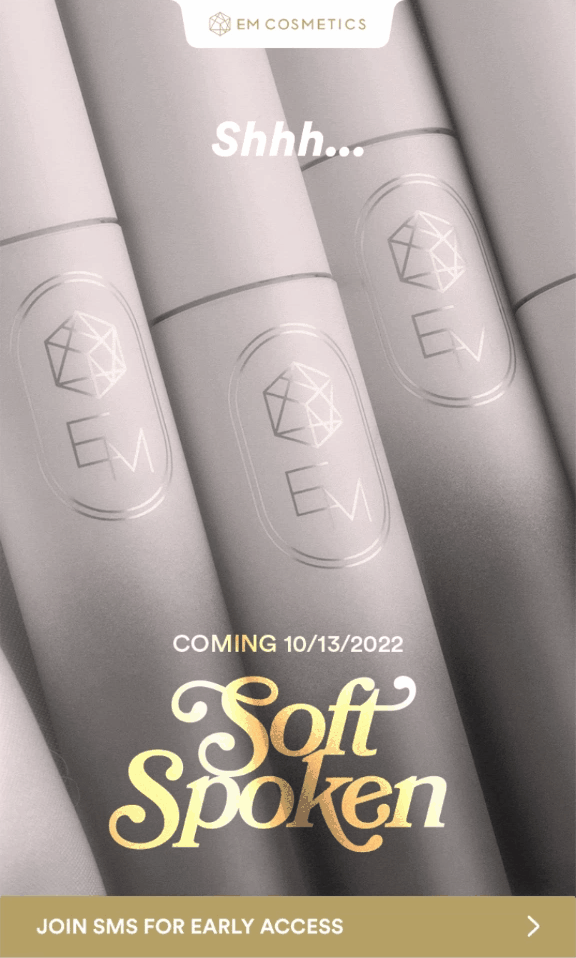
8. Use Dynamic Content Blocks
Changing sections of your email based on the user’s behavior, purchasing history, or previous interests can be a matter of simply dragging and dropping a dedicated content block in your email’s layout.
Adding dynamic content blocks to your emails can help you create email sections that are specific to the recipient, saving you time from creating different emails for each customer manually.
Netflix is one of the brands that make perfect use of dynamic content blocks.

(Source)
This example displays various shows that are cherry-picked based on the recipient’s watching activity and favorites. In this example, the platform evaluated the user’s last watched to suggest shows from a category they’re currently interested in.
Actions like this have a high chance of attracting attention, boosting engagement, and CTR.
9. Add Interactive Elements
Interactive emails encourage engagement by letting users interact directly within the email itself without needing to click out immediately.
A great example is Xfinity, which has used a carousel-style showcase, allowing users to mimic “switching” or “flipping” through images, like they would flip through channels with their “X1 Voice Remote,” as the email copy urges.
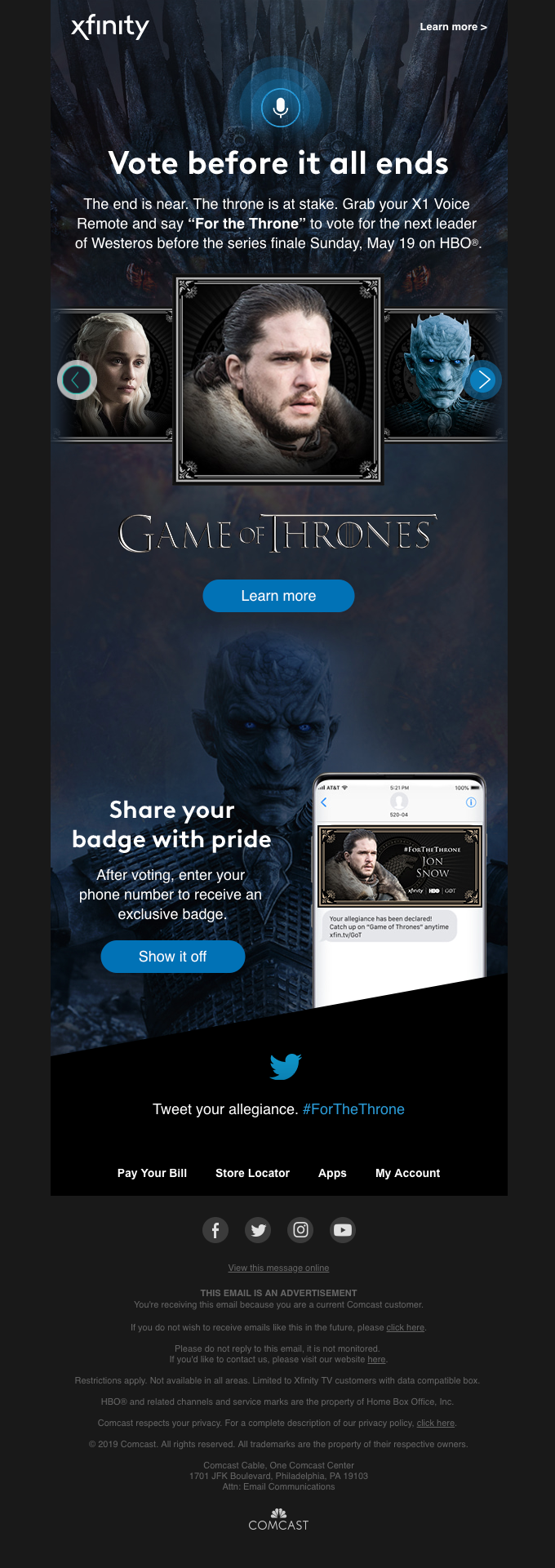
(Source)
Interactive emails not only increase the time recipients spend viewing your email. They also subtly guide the recipient toward clicking on a relevant CTA.
Just make sure to interact carefully and test across devices. Some elements may not work perfectly in every inbox provider.
10. Create Urgency With Countdown Timers
Nothing motivates clicks like a ticking clock. Countdown timers are a powerful visual tool that instills a sense of urgency and encourage subscribers to act fast. This element is especially effective for flash sales, event registrations, or limited-time offers.
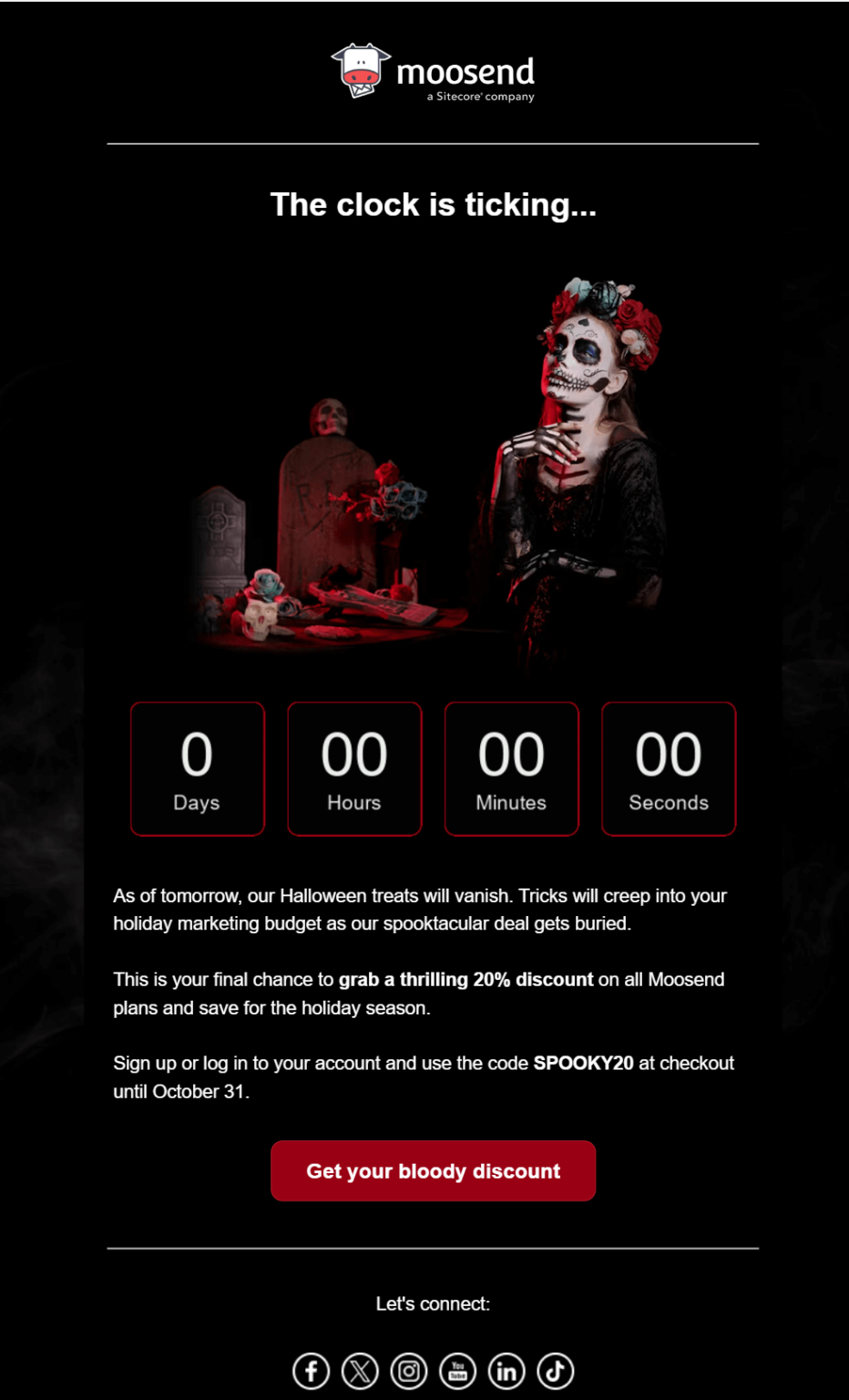
In Moosend, we use countdown timers in campaigns to emphasize the time left on a sale. The real-time ticking clock grabs attention and adds urgency. Especially when placed right above a bold CTA, like it is in the example above.
This tactic taps into FOMO (Fear of Missing Out), making users more likely to click through and take action before time runs out.
Mastering Email Click-Through Rate
Successfully increasing your email click-through rate means that you’re improving your campaigns, and the audience is more engaged. If you’re struggling with low CTR, you can start implementing the guaranteed tips above, and you’ll soon see a definite improvement.
In case you want a robust email marketing and automation platform that’s affordable while giving you full A/B testing capabilities to effectively boost your CTR, create a Moosend account today and put your email marketing on the afterburner!




 Published by
Published by

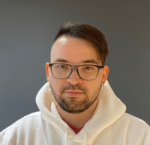 Published by
Published by